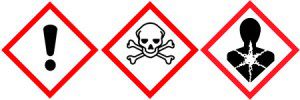By John Baker, CIH, Industrial Hygiene Support Services Manager, Total Safety
Back in 1983, the OSHA Hazard Communication Standard, 29CFR1910.1200, was born. This important worker right-to-know standard was well founded on a three legged stool: (1) labels on containers, (2) accurate and complete Material Safety Data Sheets (MSDS) and (3) training of employees.
In that year, most personal computers still used the MS-DOS operating system and didn’t have a mouse; the last episode of M*A*S*H was aired, and President Ronald Reagan called the Soviet Union the “Evil Empire,” while we were still in the throes of the Cold War. We were on the threshold of major changes in our international relationships as a suicide bomber destroyed the US Embassy in Beirut, Lebanon killing 63 people.
Since then, the world has continued to change as a result of “globalization.” We are exporting products to and importing products from countries, which may use hazard classifications that differ from ours. These differing classifications could impede trade and the accurate communication of safe practices to employees, customers and the general public. For example, a liquid with a flash point of 120º F would have been considered “Flammable” in Germany, but OSHA would consider it “Combustible.”
Under the leadership of the U.S. Department of State, OSHA, along with EPA, CPSC, FDA and DOT, are considering whether our approach to informing and protecting workers and the public should conform to the Globally Harmonized System for Classification and Labeling of Chemicals (the GHS) established by the United Nations in 2003 with the current 3rd edition released in 2009. Regarding employee safety and health, OSHA published a proposed rule in 2009 to implement the GHS, with public hearings to be held this year. For transportation purposes, DOT has already revised the Hazardous Material Regulations to harmonize classification of toxic materials and flammable liquids with UN Model Regulations. Regardless of whether the rest of the U.S. government formally adopts the GHS, we, in industry, must become knowledgeable about the system because most of our important trading partners, including Canada, Mexico, the UK and the other members of the European Union, China, Japan, Korea and Australia, have committed to aligning their hazard communication requirements with the GHS.
So what will change under GHS?
For one thing, Material Safety Data Sheets (MSDS) will be known as “Safety Data Sheets (SDS),” and they must adhere to a 16 section format similar to ANSI Z400.1 developed through the leadership of the American Chemistry Council. But under GHS, Section 2 will be “Hazard identification” and Section 3 will give “Composition/information on ingredients” instead of the other way around.
Also Section 2 must list the GHS hazard class and category, such as Flammable Liquid, category 1, and specific label elements including “signal words,” e.g., “Danger” or “Warning;” standardized hazard statements and code, such as “H224, Extremely Flammable Liquid and Vapor,” standardized precautionary statements and codes, such as “P210, Keep away from heat/sparks/open flames/hot surfaces – No smoking” and new graphic symbols called “pictograms.” For example, the three pictograms below indicate that the material may pose various types of toxicity. The proper pictogram to use will depend on the GHS hazard class and category.
At this time, it is expected that after the public hearings this year, and a post-hearing comment period, OSHA will draft and adopt a final rule in 2011, with a transition period for adoption through 2014. There is a wealth of information at the OSHA web site, which should be checked regularly to keep posted on changes.









